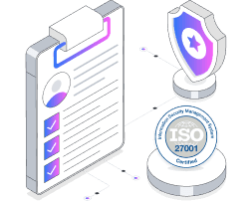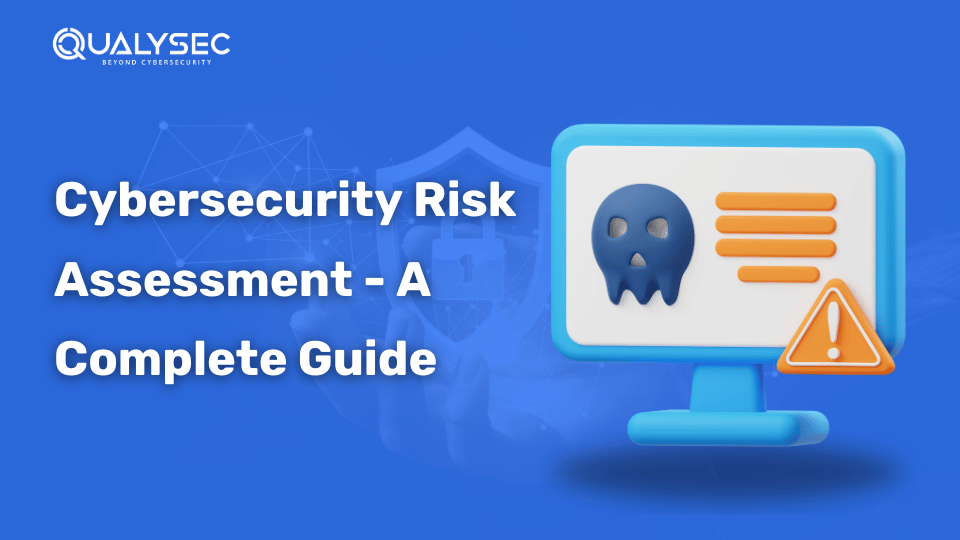Cybersecurity Risk Assessment – A Complete Guide
Cybersecurity risk assessment helps businesses avoid costly security incidents and compliance issues. It is a systematic process that identifies vulnerabilities in an IT environment, checks the likelihood of them happening, and determines their potential impact. Risk assessments also recommend measures to enhance the organization’s security posture and mitigate the risk of breaches. According to Forbes, 2023 saw a significant increase in cyberattacks, with more than 343 million victims. Since the nature of cyber threats evolves regularly, they have become more sophisticated and frequent. In fact, according to sources, there is a cybercrime every 37 seconds on average. This blog aims to help organizations of all levels by educating them about cybersecurity risk assessments. We will discuss the steps involved in the process and the tools and techniques used by cybersecurity experts to comprehensively analyze the IT infrastructure. What is Cybersecurity Risk Assessment? A cybersecurity risk assessment is a process of checking the current security measures of an organization and whether they are strong enough to resist a cyberattack. The main purpose of a cybersecurity risk assessment is to uncover security flaws in IT systems and make suggestions for their improvement. Almost every organization uses the Internet and has some form of IT infrastructure, which means they all are vulnerable to cyberattacks. To know what type of security risk an organization can face, they conduct a cybersecurity risk assessment. By mitigating the risks involved, organizations can prevent costly breaches, comply with industry standards, and build trust with customers and stakeholders. There are various cyber security assessment frameworks available internationally, but they all share the same goal. For example, The National Institute of Standards and Technology (NIST) Cybersecurity Framework and ISO 27001 are the two most popular frameworks that outline what needs to be done to have robust cybersecurity. Benefits of Conducting a Cybersecurity Risk Assessment A cybersecurity risk assessment helps an organization improve its cybersecurity program by identifying and fixing security vulnerabilities. It has a wide range of benefits, such as: 1. Identify Vulnerabilities A risk assessment helps you uncover potential security weaknesses in your applications and networks, such as outdated software, weak passwords, and configuration issues. By identifying these vulnerabilities early, you can mitigate them before they are exploited by attackers. 2. Improve Overall Security By understanding your security gaps in detail, you can implement the necessary measures to protect sensitive data and IT infrastructure. This might include enhancing your firewall settings, enforcing stronger access controls, and implementing multi-factor authentication (MFA). 3. Achieve Compliance Many industries have strict regulations and standards for data protection. By conducting a cybersecurity risk assessment, you can ensure your organization meets these legal requirements and avoid fines and penalties. Popular compliance standards include ISO 27001, SOC 2, HIPAA, GDPR, etc. It also increases your organization’s credibility. 4. Reduce Chances of Cyberattacks By detecting and mitigating security risks, you can minimize the chances of data breaches and cyberattacks. Additionally, this will protect your organization from financial losses, bad reputation, customer loss, and business disruptions. 5. Build Customer Trust By conducting a vulnerability assessment in cyber security, you can show that you take data protection and asset protection seriously. As a result, it will build trust among your customers and stakeholders, knowing that their data is safe with you. This will even attract more customers and give you a competitive advantage. 6. Allocate Resources Appropriately A comprehensive risk assessment will let you know the most critical vulnerabilities and threats to your organization. As a result, you can make informed decisions in allocating your cybersecurity budget and manpower to the right place. 7. Continuous Improvement Cyber threats are always evolving, with attackers trying new ways to penetrate your systems. Cybersecurity is not a one-time thing, it’s an ongoing process. Regular information security risk assessment help you adapt to changes in your IT environment and continuously improve your security posture. What are the Steps Involved in a Cybersecurity Risk Assessment? The first thing you need to do is choose the right cybersecurity risk assessment company. the right company will follow all the industry-approved standards and methodologies for a thorough risk assessment. There are several steps involved in a cyber threat assessment, such as: Ever seen a cybersecurity risk assessment report? If not, then download one by clicking the link below! Latest Penetration Testing Report Download Tools and Techniques for Cybersecurity Risk Assessment A cybersecurity risk assessment is basically testing your IT environment for vulnerabilities, measuring existing security risks, and their real-world impact, and suggesting remediation measures. Several tools and technologies can help accomplish this. However, the most used ones are: 1. NIST Framework The National Institute of Standards and Technology (NIST) framework provides a set of guidelines for organizations to manage and reduce cybersecurity risks in a better way. By creating a common language for managing cyber risks, the NIST framework provides comprehensive management strategies that are understood by all departments. The NIST framework is divided into 5 functions, each related to a specific area of risk assessment and management in cyber security: 2. Automated Questionnaires Questionnaires are used to evaluate third-party security risks. Since creating and sending questionnaires takes a lot of time and resources, using an automated platform is the best way to validate the responses. It helps you create vendor-specific questionnaires that can be sent at scale and tracked. 3. Security Ratings These provide a data-driven and objective view of a company’s cybersecurity posture. While initially security ratings were used to assess third-party risk, many organizations now have adopted them to monitor their internal security measures. They also provide valuable insights into various security aspects, such as security testing, attack surface management, and threat identification. 4. Vulnerability Assessment Tools These tools follow a definitive script and help in identifying common vulnerabilities within your IT infrastructure. By using the report generated from vulnerability assessment tools, organizations can better understand each security risk, helping them establish a robust security posture. Popular vulnerability scanners include Nessus, OpenVAS, Intruder, Netsparker, etc. 5. Penetration Testing Penetration tests involve simulating




